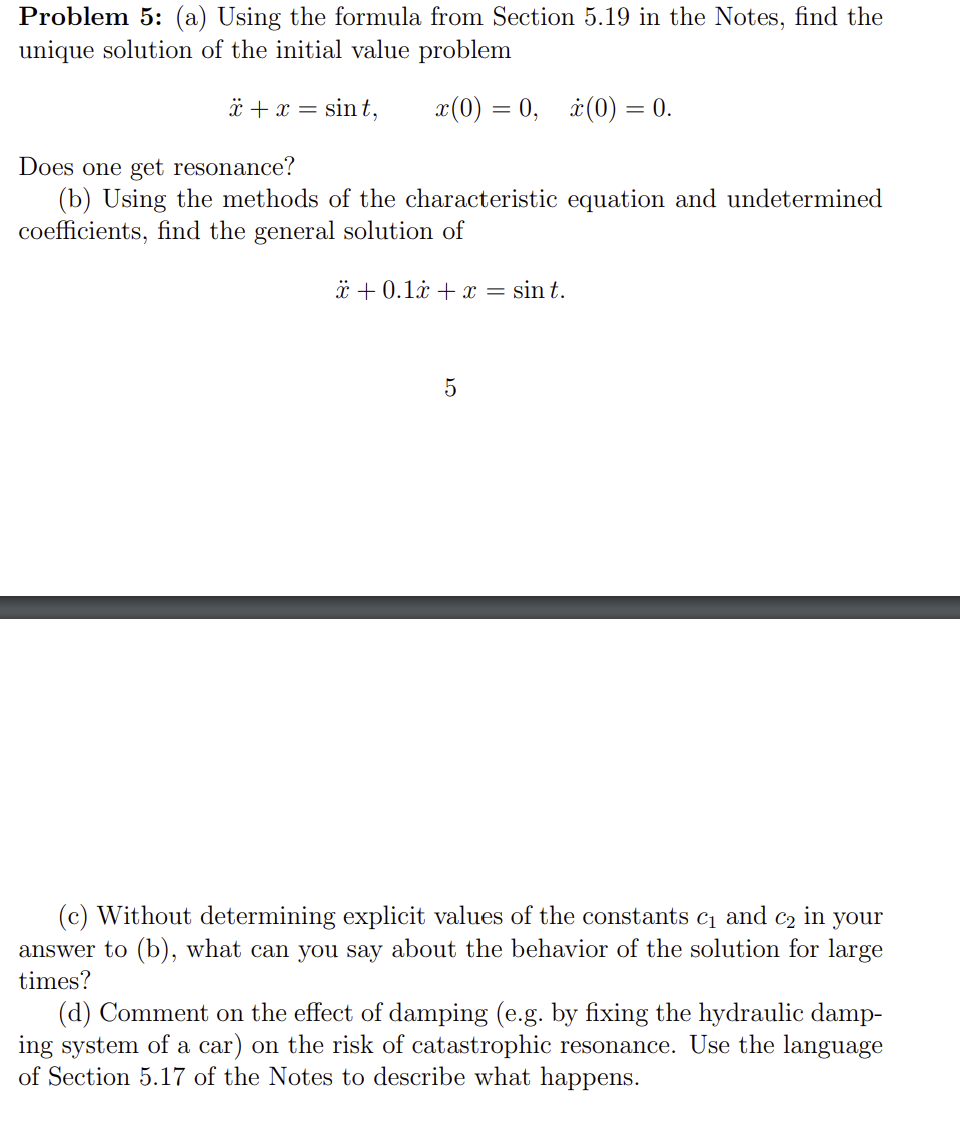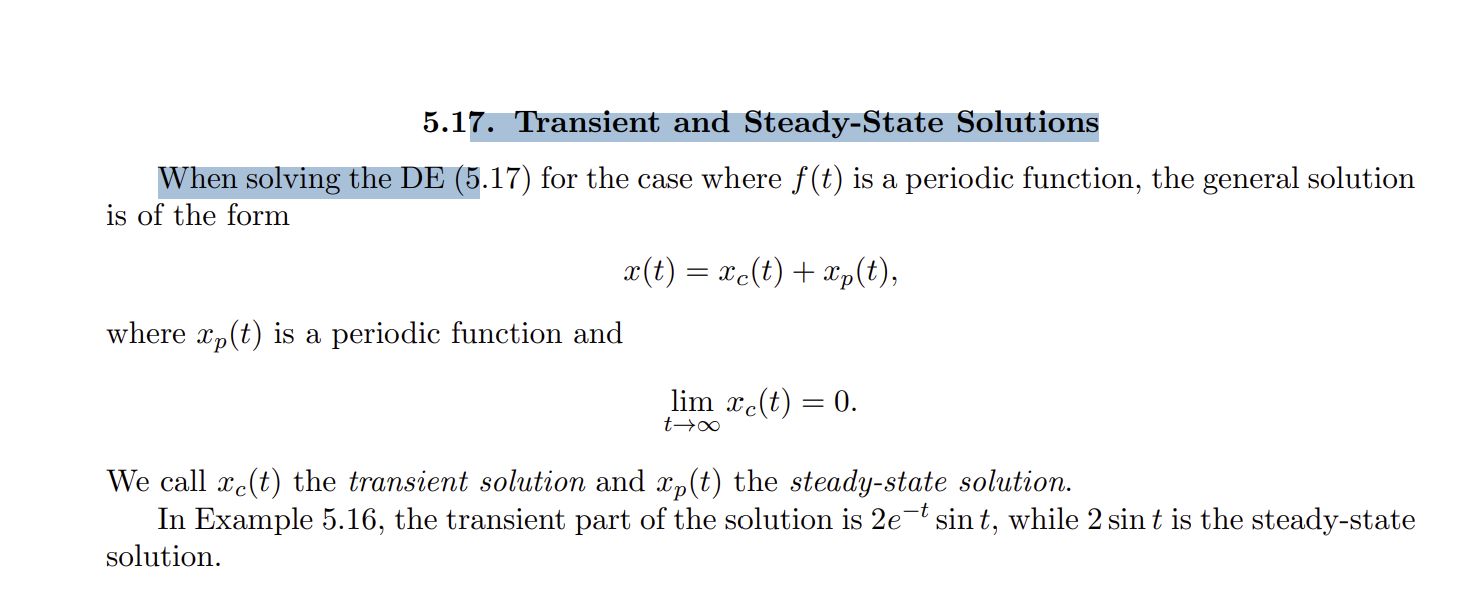Answered step by step
Verified Expert Solution
Question
1 Approved Answer
Problem 5: (a) Using the formula from Section 5.19 in the Notes, find the unique solution of the initial value problem x + x



Problem 5: (a) Using the formula from Section 5.19 in the Notes, find the unique solution of the initial value problem x + x = sint, x(0) = 0, x(0) = 0. Does one get resonance? (b) Using the methods of the characteristic equation and undetermined coefficients, find the general solution of 0.1xx = sint. 5 (c) Without determining explicit values of the constants c and C2 in your answer to (b), what can you say about the behavior of the solution for large times? (d) Comment on the effect of damping (e.g. by fixing the hydraulic damp- ing system of a car) on the risk of catastrophic resonance. Use the language of Section 5.17 of the Notes to describe what happens. 5.19. Pure Resonance Solving the DE (5.21) with initial values x(0) = 0, x(0) = 0 for the case y = w yields the solution x(t) = Fo 2w2 sin(wt) Fot co -t cos(wt). 2w The frequency Y/2T of the driving force is equal to the frequency w/2 of free oscillations. As a result the oscillations become larger and larger in time, see Figure 5.13. A real system in this state of pure resonance would necessarily fail once the spring is stretched beyond its elastic limit. Including an additional damping term of the form 2x in (5.21) would prevent the resonance from happening. 5.17. Transient and Steady-State Solutions When solving the DE (5.17) for the case where f(t) is a periodic function, the general solution is of the form where xp(t) is a periodic function and x(t) = xc(t) + xp(t), lim x(t) = 0. 0047 We call x(t) the transient solution and xp(t) the steady-state solution. In Example 5.16, the transient part of the solution is 2et sint, while 2 sint is the steady-state solution.
Step by Step Solution
There are 3 Steps involved in it
Step: 1

Get Instant Access to Expert-Tailored Solutions
See step-by-step solutions with expert insights and AI powered tools for academic success
Step: 2

Step: 3

Ace Your Homework with AI
Get the answers you need in no time with our AI-driven, step-by-step assistance
Get Started


